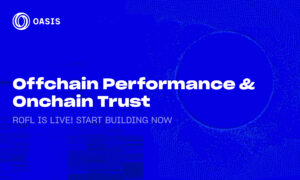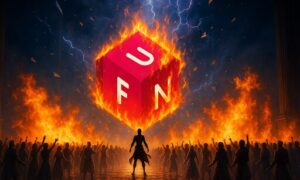2021 Liquidity mining is driving the DeFi industry to greater heights. According to PAData’s comprehensive analysis of the DeFi sector in the first half of this year, DeFi’s net total locked volume (TLV) has soared to US$56.862 billion in the first half of the year, an increase of approximately 307.09%. AMM DEX’s average monthly trading volume reached approximately US$80.3 billion in the first half of the year, an increase of approximately 24.12%. And the total first half revenue of the 16 major DeFi protocols exceeded US$1.843 billion. It is clear that after more than a year of development, DeFi has developed to a considerable scale.
While liquidity mining has hampered the longevity or even the viability of DEX, the money-spinning effect has been sustained. According to DeFi Llama data, on June 4, the total lock-up volume (TVL) of DeFi applications on the major public chains exceeded the 100 billion U.S. dollar mark for the first time. As of July 5, this figure has climbed to 117 billion U.S. dollars.
In the crypto world, the figure of hundreds of billions of dollars is obviously amazing enough, but compared with traditional finance, this amount of funds is actually only equivalent to the 40th largest bank in the United States, and the amount of funds is roughly equivalent to Silicon Valley Bank and BBVA USA.
Capital is always profit-seeking. Under the current yield environment, funds outside the circle will undoubtedly continue to flock to DeFi with the smell of high returns, and TVL values are expected to break through new barriers. However, for new entrants, whether it is an institution or a retail investor, DeFi, as a native product of the world on the chain, always has a certain level of understanding and threshold for use. How to find a pool with sufficient security and high enough APY (annual return) It is a common problem for all newcomers to earn as much profit as possible with the smallest risk possible.
The upgrade and transformation of DEX features a one-stop DeFi eco-platform with aggregated revenue as the main focus and DEX decentralized trading platform as a supplement. Among them, AI-powered yield farming aggregator mainly refers to the high-yield smart pool function of aggregated mining. DEX provides advantageous trading pairs and reacts quickly to market changes and hot quotes, opens up the dual-chain DeFi ecosystem, and iterates on more, easier-to-use and more advantageous DeFi applications.
AI-powered yield farming aggregator
The BXH Smart Pool is a decentralized pooled mining protocol that is centred on providing users with DeFi aggregated financial management services. When users deposit stable coins such as DAI, USDC, USDT and non-stable cryptocurrencies such as BTC, ETH, TRON, etc., the smart pool will invest the funds in some long-running and reputable DeFi protocols, while automatically regulating the deployment of funds according to the real-time floating yield changes of different protocols. While automatically helping users to find maximum returns, the smart pool also reduces the gas cost of decentralised operations that can be reduced through the mechanism of a single position transfer.
BXH logged on to BSC on 30th July and was online for 24 hours with a TVL of $400 million. The smart AI-aggregated revenue meets the needs of more users and allows more organisations to see the difference from traditional DeFi. Aggregate mining proceeds will be distributed to all users proportionally, without the need for intermediaries or no principal draws, which is fair and equitable.
On BXH, the user participates in the same fee for all smart pools, i.e., 0% of principal and 10% of mining returns.
Many smart pools charge fees directly in proportion to the principal amount. The problem lies in that charging fees in proportion to the principal amount is to some extent detrimental to the user’s principal. When users invest more principal, they need to pay more transaction fees.
In the BXH smart pool, no matter how much principal the user has invested, apart from 10% of the user’s mining returns, no other fees will be charged. This means that the BXH smart pool is truly a principal-free aggregated earner, which is a protection for the user’s assets.
Advantageous Trading Pair DEX platform
BXH’s DEX platform focuses on advantageous trading pairs, integrating automatic market making (AMM), community autonomy (DAO) and platform coin pledge mining (Staking), together with a series of incentives designed to provide the best depth of trading and the best pledge yield to help users get the most out of their money, which will further stimulate the flow of capital into DEX while further stimulating market attention. The DEX platform is completely decentralized. It allows tokens to be freely deposited for exchange and can be freely withdrawn without the registration, identity verification or withdrawal restrictions of a centralized exchange. It is not traded against other trading users, rather, it is traded against a pool of tokens and has an automated market making model (AMM) to calculate the trading price.
BXH uses AMM (Automated Market Maker) as a core component of their trading section, which pools everyone’s liquidity together and then makes a market based on an algorithm. That is, it is essentially an algorithm-based automated market making service that can provide unlimited liquidity and can have a large order size without worrying about a small liquidity pool. Unlike the ultra-high GAS fees on the Ethereum chain (up to tens or even hundreds of dollars per transaction), BXH’s DEX platform has a high utilization of gas, fees can be as low as $0.001 per transaction.
Most importantly, The BXH token is a “key” to connect the high-yield smart pool on HECO and BSC, DEX, and more DeFi applications. It does not only have a governance function, but also a credential to subsequently acquire many super-equities, including airdrop shares, header mining rights, dividend equity, etc. Total volume of 1 billion tokens: 540 million on HECO; 460 million on BSC; part of the proceeds from HBXH tokens on BSC will be used to buy back BXH tokens on HECO in the future to protect the rewards of the holders. The BXH tokens are rated at a limited total amount, with several halving and buyback mechanisms, and have a wide range of applications, having the potential to be increasingly valuable in the future.
Therefore, users using BXH tokens as an asset to settle mining proceeds will not only enjoy the dividends from mining on the one hand, but also profit from the rising price of BXH tokens.
BXH has the potential to become the new leading DeFi platform, even impacting the existing Uniswap and Sushiswap, forcing them to improve their user experience and profit effect. This is something that will be beneficial to the development of the DeFi as a whole.
Website: bxh.com
Twitter: https://twitter.com/BXH_Blockchain
Telegram: https://t.me/bxh_global



































